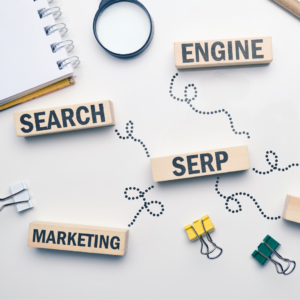In today’s competitive market, businesses must prioritize customer loyalty and retention to ensure long-term success. Implementing effective customer loyalty and retention strategies, including customer engagement, can significantly enhance customer lifetime value, turning satisfied customers into brand advocates.
This guide explores key strategies that foster strong emotional connections with customers, minimize churn, and create lasting loyalty.
Key Takeaways
Personalized Customer Experience: Tailoring customer experiences through personalized communication and services enhances loyalty and retention, ensuring customers feel valued and understood.
Loyalty Programs and Rewards: Implementing loyalty programs that offer rewards for repeat purchases helps build strong emotional connections and encourages continued engagement with the brand.
Customer Feedback and Communication: Regularly collecting and acting on customer feedback, combined with maintaining consistent communication, strengthens relationships and improves overall customer satisfaction.
Understanding Customer Loyalty and Retention

What is Customer Loyalty?
Customer loyalty refers to the emotional connections with customers, while retention is about keeping customers coming back.
Factors that contribute to customer loyalty include excellent customer service, loyalty programs, brand loyalty, customer engagement, and emotional connections. Strong customer loyalty often leads to brand
What is Customer Retention?
Customer retention is about keeping customers coming back through excellent customer service, loyalty programs, and well-defined customer retention strategies that enhance the customer journey.
Customer attrition, also known as customer churn, on the other hand, refers to the loss of customers over time, which businesses aim to minimize through effective retention strategies.
A successful customer retention strategy emphasizes tailored approaches that consider individual customer needs, enhancing overall experiences, and creating emotional connections to foster brand advocacy.
A key component of this is having a comprehensive customer retention plan to prevent revenue loss and increase sales.
The Connection Between Customer Loyalty and Retention
Retention and loyalty are closely related and reinforce each other.
Improving customer loyalty can lead to increased retention and brand advocacy. Brand loyalty is a crucial factor that strengthens both customer loyalty and retention.
Measuring Customer Loyalty and Retention
Customer Retention Rate (CRR)
Customer retention rate measures the percentage of customers retained over a given period.
A high retention rate indicates a strong customer base.
Customer Churn Rate (CCR)
Customer churn rate (customer attrition) measures the percentage of customers who stop buying from a business over a given period.
A high churn rate indicates a need for better strategies to retain customers, emphasizing the importance of community engagement and feedback solicitation.
Customer Lifetime Value (CLV)
Customer lifetime value measures the total expected revenue from a customer over their lifetime.
Understanding CLV and customer profitability helps businesses forecast future cash flows and determine the number of customers required to achieve profitability.
Repeat Purchase Rate (RPR)
Repeat purchase rate measures the percentage of customers who make repeat purchases.
A high RPR indicates a strong customer base
Net Promoter Score (NPS)
Net promoter score measures customer loyalty and satisfaction.
NPS is a simple and effective way to measure customer loyalty and customer satisfaction.
Strategies for Existing Customers

Create a Strong Onboarding Experience
Create a seamless onboarding experience that makes customers happy every step of the way by considering all customer touchpoints throughout the entire customer journey.
Focus on creating a convenient, rewarding, and personalized experience for retaining customers.
Provide Personalized Customer Experience
Provide a personalized customer experience by utilizing customer segmentation to cater to individual customer needs and preferences.
Use customer feedback to inform marketing strategies and improve customer service.
Implement a Customer Feedback Loop
Implement a customer feedback loop to collect, analyze, and distribute customer reviews and surveys, gaining valuable customer insights.
Use customer feedback to identify areas for improvement and make necessary changes.
Maintain a Customer Communication Calendar
Maintain a customer communication calendar to manage customer touchpoints and provide regular updates.
Use customer communication to build trust and loyalty with customers.
Offer Unique Services
Offer customer-centric services that meet customer needs and preferences, leading to satisfied customers.
Use customer feedback to inform product development and improve customer service.
Start a Customer Education Program
Start a customer education program to educate customers on product features and benefits.
Use customer education to empower customers, leading to increased customer satisfaction and customer empowerment.
Empower Customers with Convenience
Empower customers with convenience and customer autonomy by providing easy and accessible products and services.
Use convenience to increase customer satisfaction and loyalty.
Inspire with a Mission
Inspire customers with a mission that resonates with their values and beliefs.
Use a mission to build an emotional connection with customers, increase loyalty, and foster brand advocacy.
Building Loyal Customers

Show Gratitude with Loyalty Programs
Show gratitude to customers with a loyalty program that includes customer rewards for repeat purchases. Loyalty programs can positively influence customer behavior by encouraging repeat purchases and fostering a deeper connection with the brand.
Use loyalty programs to increase customer retention and loyalty
Prioritize Great Customer Service
Prioritize great customer service by providing quick and effective customer support.
Use customer service to build trust and loyalty with customers.
Leverage Social Responsibility
Leverage corporate social responsibility by supporting causes that customers care about.
Use social responsibility to increase customer loyalty and retention.
Identify Trends and Opportunities
Identify market trends and opportunities to improve customer retention and loyalty.
Use customer feedback to inform marketing strategies and improve customer service.
Use Gamification and Referral Programs
Use customer incentives through gamification and referral programs to encourage customers to make repeat purchases.
Use customer incentives through gamification and referral programs to increase customer retention and loyalty.
Form a Community Around Your Product or Service
Form a customer community around your product or service to build a sense of belonging among customers.
Use community building to increase customer loyalty and retention.
Become Part of the Customer’s Lifestyle
Become part of the customer’s lifestyle through customer integration by providing products and services that meet their daily needs.
Use convenience and accessibility to increase customer satisfaction and loyalty.
Establish Loyalty with a One-of-a-Kind Product
Establish loyalty with a one-of-a-kind product by highlighting its unique value proposition that meets customer needs and preferences.
Use unique products to increase customer retention and loyalty.
Use Experiences to Elicit Positive Feelings
Use experiences to elicit positive feelings and achieve customer delight among customers.
Use experiences to build an emotional connection with customers and increase loyalty.
Capitalize on Social Proof
Capitalize on social proof by showcasing customer testimonials and reviews.
Use social proof to increase customer trust and loyalty.
Educate and Empower
Educate and empower customers through customer training by providing them with the knowledge and tools they need to succeed.
Use education and empowerment to increase customer satisfaction and loyalty.
Surprise and Delight
Surprise and delight customers with unexpected rewards and benefits.
Use unexpected rewards to increase customer satisfaction and loyalty.
Provide Omnichannel Support
Provide multichannel support to meet customer needs and preferences across multiple channels.
Use omnichannel support to increase customer satisfaction and loyalty.
Conclusion
In conclusion, the importance of customer loyalty and retention strategies cannot be overstated in today’s competitive market landscape. Businesses that prioritize these strategies are better positioned to achieve long-term success, as they foster deeper emotional connections with customers and enhance customer lifetime value. By focusing on keeping existing customers satisfied and engaged, companies can significantly reduce churn and turn their customers into loyal brand advocates. This not only drives repeat business but also strengthens the brand’s reputation, leading to sustained profitability.
A key component of successful customer loyalty and retention strategies is the personalization of customer experiences. When businesses tailor their services and communications to meet individual customer needs, they create a sense of value and understanding that is crucial for building loyalty. Personalized experiences demonstrate that a company truly cares about its customers, which in turn fosters trust and encourages repeat interactions. This strategy is especially effective in today’s market, where customers expect brands to understand and anticipate their needs.
Loyalty programs are another essential element in customer loyalty and retention strategies. These programs reward customers for their repeat business, creating a strong incentive for continued engagement with the brand. When designed effectively, loyalty programs can significantly boost customer retention by reinforcing positive behavior and strengthening the emotional connection between the customer and the brand. Over time, these programs can transform casual customers into devoted advocates who actively promote the brand to others.
Maintaining consistent and meaningful communication is also vital for successful customer loyalty and retention. Regularly collecting and acting on customer feedback ensures that businesses remain aligned with their customers’ evolving needs and preferences. This open line of communication not only strengthens relationships but also enhances overall customer satisfaction. Moreover, a well-executed communication strategy can help in addressing potential issues before they lead to churn, ensuring that customers feel heard and valued throughout their journey with the brand.
In addition to personalization and communication, offering unique and valuable services is crucial for standing out in a crowded market. Customers are more likely to remain loyal to brands that consistently meet and exceed their expectations. By offering products or services that cater to specific customer needs and preferences, businesses can differentiate themselves from competitors and build a loyal customer base. These unique offerings, combined with a focus on convenience and accessibility, can further enhance customer satisfaction and loyalty.
Another critical aspect of customer loyalty and retention strategies is empowering customers through education and convenience. When customers feel knowledgeable and confident about the products or services they are using, they are more likely to remain loyal to the brand. Providing educational resources, such as tutorials, guides, and customer support, helps customers maximize the value they receive from the brand. Additionally, offering convenient and accessible solutions that integrate seamlessly into customers’ lives can create a sense of ease and reliability, further strengthening their loyalty.
Corporate social responsibility (CSR) also plays a significant role in customer loyalty and retention. Today’s consumers are increasingly conscious of the values and ethics of the brands they support. Businesses that demonstrate a commitment to social and environmental causes can build stronger emotional connections with their customers, leading to increased loyalty. By aligning the brand with causes that resonate with their customers, companies can create a community of like-minded individuals who are more likely to remain loyal and advocate for the brand.
In summary, customer loyalty and retention strategies are essential for building a sustainable and profitable business. By focusing on personalization, loyalty programs, communication, unique offerings, education, convenience, and corporate social responsibility, companies can create lasting relationships with their customers. These strategies not only help in retaining existing customers but also in turning them into enthusiastic advocates for the brand. As the market continues to evolve, businesses that prioritize and adapt their customer loyalty and retention strategies will be best equipped to achieve long-term success and maintain a competitive edge.
To gain further insights, you have the option to register for the Off-Grid SkillsFuture Career Transition Programme, specifically the “(SCTP) Advanced Certificate In Digital Retail“.
FAQs About customer loyalty and retention
What is the difference between customer loyalty and customer retention?
Customer loyalty refers to the emotional connection customers have with a brand, often leading to brand advocacy. Customer retention focuses on strategies to keep customers coming back, minimizing customer attrition.
How can a business improve its customer retention rate?
Businesses can improve customer retention by offering personalized experiences, implementing effective loyalty programs, maintaining regular communication, and continuously gathering and acting on customer feedback.
Why is customer lifetime value (CLV) important?
CLV is crucial as it measures the total revenue a business can expect from a customer over their lifetime. Understanding CLV helps businesses make informed decisions about customer acquisition and retention strategies.
How do loyalty programs contribute to customer retention?
Loyalty programs incentivize repeat purchases by rewarding customers, fostering a deeper connection with the brand, and encouraging long-term engagement.
What role does customer feedback play in retention strategies?
Customer feedback is vital for identifying areas of improvement, understanding customer needs, and making necessary changes to enhance the overall customer experience, thereby increasing retention and loyalty.
Author
-

As a seasoned Content and Product Strategist, Benjamin leverages a unique blend of creativity and analytical prowess to craft compelling articles. With a passion for delivering impactful content experiences, he specializes in guiding brands towards strategic success through thoughtful planning and meticulous execution. Armed with a keen understanding of consumer behaviour and market trends, he drives engagement and fosters meaningful connections between audiences and brands.
View all posts




